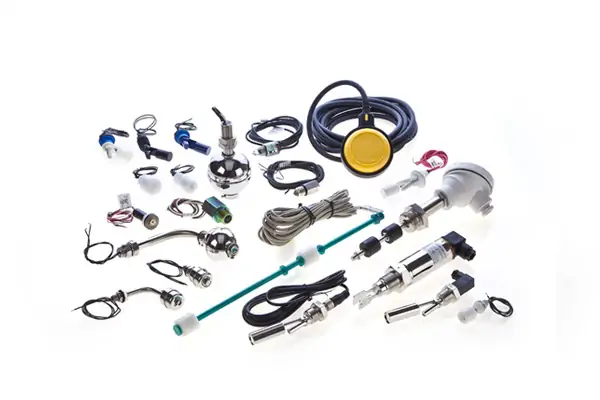 Add My Company
Add My Company

When it comes to industrial pressure measurement and control, precision is everything. Two essential components for maintaining optimal system performance are level switches and level transmitters. While they may sound similar, they serve distinctly different purposes in monitoring liquid levels across various industrial applications.
Understanding Level Switches and Level Transmitters
What is a Level Switch?
A level switch is a binary device that functions as an on/off sensor, detecting when a liquid reaches a specific point. It is commonly used for basic level detection and offers a cost-effective solution for straightforward applications.
What is a Level Transmitter?
A level transmitter, on the other hand, provides continuous, real-time measurement of liquid levels. It delivers detailed monitoring and data transmission, making it suitable for applications where precision and remote monitoring are critical.
Types of Level Switches
Applications Engineering offers a wide range of level switches to suit various industrial needs, including:
- Stainless steel and alloy level switches
- Adjustable tank level switches
- Optical and solid-state level switches
- Marine and pump level switches
These devices excel in applications such as:
✔ Preventing tank overflows
✔ Protecting pumps from running dry
✔ Basic liquid level monitoring
A float-based level switch, for example, works through a simple mechanism. As liquid rises or falls, a floating element triggers an electrical switch, instantly signalling when a critical level is reached.
Types of Level Transmitters
For more advanced level monitoring, we offer a range of high-precision level transmitters, including:
- Magnetic float level transmitters
- Radar level transmitters
- Magnetostrictive level transmitters
These devices are ideal for applications requiring:
✔ Constant, real-time level monitoring
✔ High accuracy measurements
✔ Integration with complex control systems
Key Differences Between Level Switches and Level Transmitters
| Feature | Level Switch | Level Transmitter |
|---|---|---|
| Functionality | Binary detection (on/off) | Continuous, proportional measurement |
| Installation Complexity | Simple, quick installation | More complex setup, requires careful calibration |
| Cost Considerations | Budget-friendly | Higher initial investment, but offers more detailed insights |
Choosing the Right Solution
Selecting between a level switch and a level transmitter depends on several key factors:
1. Application Requirements
✔ Need basic level detection? A level switch is likely sufficient.
✔ Require precise, continuous monitoring? Opt for a level transmitter.
2. Environmental Conditions
✔ Harsh industrial environments may require more robust solutions.
✔ Corrosive or extreme temperature settings demand specialised equipment.
3. Budget Constraints
✔ Level switches are a low-cost solution for simple applications.
✔ Level transmitters require a higher initial investment but provide long-term operational benefits, such as:
- Enhanced process control
- Reduced operational risks
- Improved system efficiency
Industry-Specific Applications
Different industries have unique requirements when it comes to level monitoring:
✔ Water treatment – Requires precise level monitoring.
✔ Chemical processing – Demands high accuracy and reliability.
✔ Marine applications – Needs robust and dependable level detection.
✔ Manufacturing – Benefits from continuous, real-time level data.
Why Choose Applications Engineering?
At Applications Engineering, we don’t just supply components—we provide tailored solutions to meet your exact needs. Our team of experts can:
✔ Analyse your system requirements
✔ Recommend the best level measurement solution
✔ Ensure long-term efficiency and reliability
Get Expert Advice Today
Ready to optimise your level measurement system? Contact our technical team today for personalised advice and find the right level switch or level transmitter for your industrial applications.
For more information on What’s the Difference Between a Level Switch and a Level Transmitter? talk to Applications Engineering Limited

